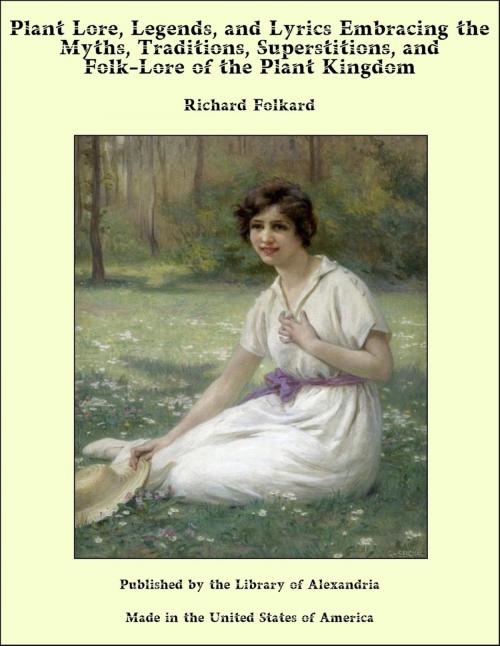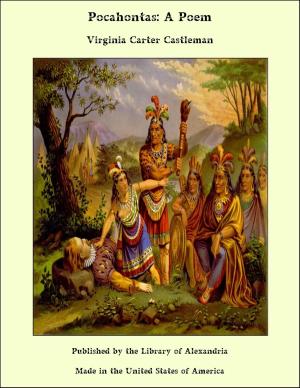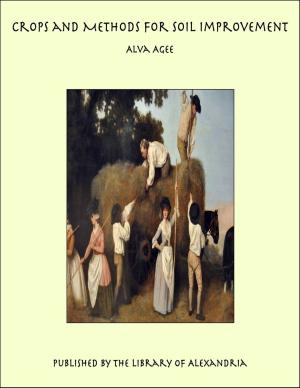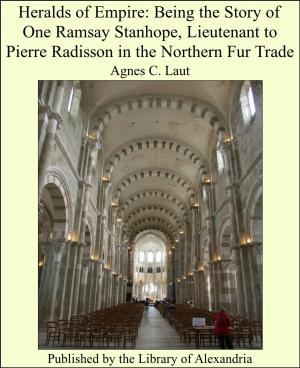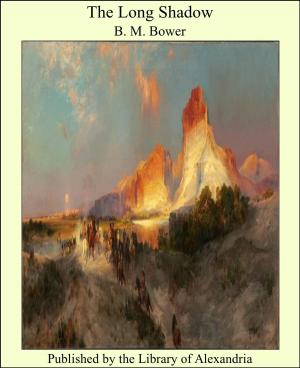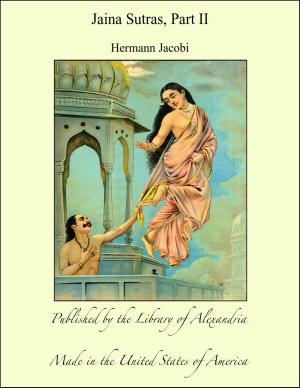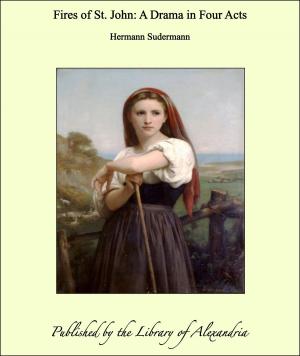Plant Lore, Legends, and Lyrics Embracing the Myths, Traditions, Superstitions, and Folk-Lore of the Plant Kingdom
Nonfiction, Religion & Spirituality, New Age, History, Fiction & Literature| Author: | Richard Folkard | ISBN: | 9781465604583 |
| Publisher: | Library of Alexandria | Publication: | March 8, 2015 |
| Imprint: | Language: | English |
| Author: | Richard Folkard |
| ISBN: | 9781465604583 |
| Publisher: | Library of Alexandria |
| Publication: | March 8, 2015 |
| Imprint: | |
| Language: | English |
THE analogy existing between the vegetable and animal worlds, and the resemblances between human and tree life, have been observed by man from the most remote periods of which we have any records. Primitive man, watching the marvellous changes in trees and plants, which accurately marked not only the seasons of the year, but even the periods of time in a day, could not fail to be struck with a feeling of awe at the mysterious invisible power which silently guided such wondrous and incomprehensible operations. Hence it is not astonishing that the early inhabitants of the earth should have invested with supernatural attributes the tree, which in the gloom and chill of Winter stood gaunt, bare, and sterile, but in the early Spring hastened to greet the welcome warmth-giving Sun by investing itself with a brilliant canopy of verdure, and in the scorching heat of Summer afforded a refreshing shade beneath its leafy boughs. So we find these men of old, who had learnt to reverence the mysteries of vegetation, forming conceptions of vast cosmogonic world- or cloud-trees overshadowing the universe; mystically typifying creation and regeneration, and yielding the divine ambrosia or food of immortality, the refreshing and life-inspiring rain, and the mystic fruit which imparted knowledge and wisdom to those who partook of it. So, again, we find these nebulous overspreading world-trees connected with the mysteries of death, and giving shelter to the souls of the departed in the solemn shade of their dense foliage. Looking upon vegetation as symbolical of life and generation, man, in course of time, connected the origin of his species with these shadowy cloud-trees, and hence arose the belief that humankind first sprang from Ash and Oak-trees, or derived their being from Holda, the cloud-goddess who combined in her person the form of a lovely woman and the trunk of a mighty tree. In after years trees were almost universally regarded either as sentient beings or as constituting the abiding places of spirits whose existence was bound up in the lives of the trees they inhabited. Hence arose the conceptions of Hamadryads, Dryads, Sylvans, Tree-nymphs, Elves, Fairies, and other beneficent spirits who peopled forests and dwelt in individual trees—not only in the Old World, but in the dense woods of North America, where the Mik-amwes, like Puck, has from time immemorial frolicked by moonlight in the forest openings. Hence, also, sprang up the morbid notion of trees being haunted by demons, mischievous imps, ghosts, nats, and evil spirits, whom it was deemed by the ignorant and superstitious necessary to propitiate by sacrifices, offerings, and mysterious rites and dances. Remnants of this superstitious tree-worship are still extant in some European countries. The Irminsul of the Germans and the Central Oak of the Druids were of the same family as the Asherah of the Semitic nations. In England, this primeval superstition has its descendants in the village maypole bedizened with ribbons and flowers, and the Jack-in-the-Green with its attendant devotees and whirling dancers. The modern Christmas-tree, too, although but slightly known in Germany at the beginning of the present century, is evidently a remnant of the pagan tree-worship; and it is somewhat remarkable that a similar tree is common among the Burmese, who call it the Padaytha-bin. This Turanian Christmas-tree is made by the inhabitants of towns, who deck its Bamboo twigs with all sorts of presents, and pile its roots with blankets, cloth, earthenware, and other useful articles.
THE analogy existing between the vegetable and animal worlds, and the resemblances between human and tree life, have been observed by man from the most remote periods of which we have any records. Primitive man, watching the marvellous changes in trees and plants, which accurately marked not only the seasons of the year, but even the periods of time in a day, could not fail to be struck with a feeling of awe at the mysterious invisible power which silently guided such wondrous and incomprehensible operations. Hence it is not astonishing that the early inhabitants of the earth should have invested with supernatural attributes the tree, which in the gloom and chill of Winter stood gaunt, bare, and sterile, but in the early Spring hastened to greet the welcome warmth-giving Sun by investing itself with a brilliant canopy of verdure, and in the scorching heat of Summer afforded a refreshing shade beneath its leafy boughs. So we find these men of old, who had learnt to reverence the mysteries of vegetation, forming conceptions of vast cosmogonic world- or cloud-trees overshadowing the universe; mystically typifying creation and regeneration, and yielding the divine ambrosia or food of immortality, the refreshing and life-inspiring rain, and the mystic fruit which imparted knowledge and wisdom to those who partook of it. So, again, we find these nebulous overspreading world-trees connected with the mysteries of death, and giving shelter to the souls of the departed in the solemn shade of their dense foliage. Looking upon vegetation as symbolical of life and generation, man, in course of time, connected the origin of his species with these shadowy cloud-trees, and hence arose the belief that humankind first sprang from Ash and Oak-trees, or derived their being from Holda, the cloud-goddess who combined in her person the form of a lovely woman and the trunk of a mighty tree. In after years trees were almost universally regarded either as sentient beings or as constituting the abiding places of spirits whose existence was bound up in the lives of the trees they inhabited. Hence arose the conceptions of Hamadryads, Dryads, Sylvans, Tree-nymphs, Elves, Fairies, and other beneficent spirits who peopled forests and dwelt in individual trees—not only in the Old World, but in the dense woods of North America, where the Mik-amwes, like Puck, has from time immemorial frolicked by moonlight in the forest openings. Hence, also, sprang up the morbid notion of trees being haunted by demons, mischievous imps, ghosts, nats, and evil spirits, whom it was deemed by the ignorant and superstitious necessary to propitiate by sacrifices, offerings, and mysterious rites and dances. Remnants of this superstitious tree-worship are still extant in some European countries. The Irminsul of the Germans and the Central Oak of the Druids were of the same family as the Asherah of the Semitic nations. In England, this primeval superstition has its descendants in the village maypole bedizened with ribbons and flowers, and the Jack-in-the-Green with its attendant devotees and whirling dancers. The modern Christmas-tree, too, although but slightly known in Germany at the beginning of the present century, is evidently a remnant of the pagan tree-worship; and it is somewhat remarkable that a similar tree is common among the Burmese, who call it the Padaytha-bin. This Turanian Christmas-tree is made by the inhabitants of towns, who deck its Bamboo twigs with all sorts of presents, and pile its roots with blankets, cloth, earthenware, and other useful articles.
